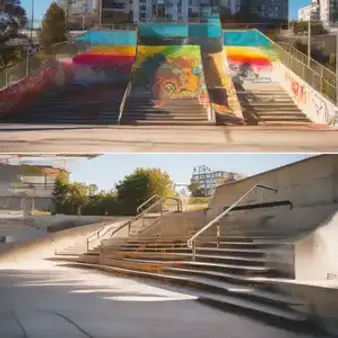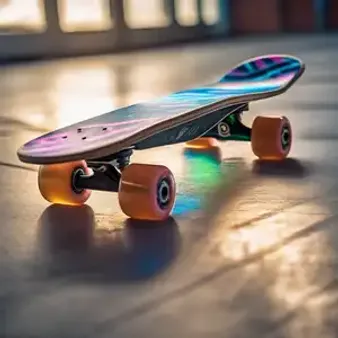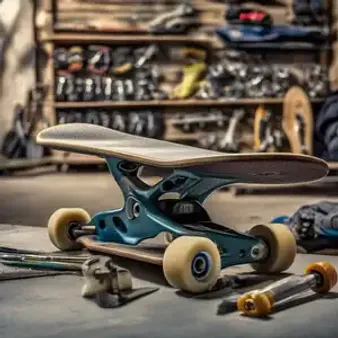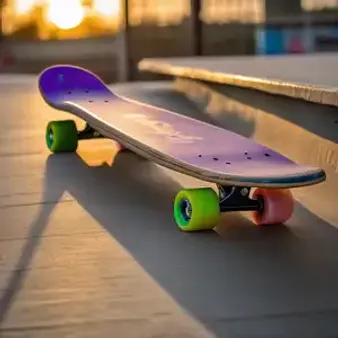Table of Contents
Getting a new skateboard is an exciting moment, whether you're a beginner or a seasoned skater. At kizworld, we want to help you make the most of your new ride. This guide covers everything from choosing the best new skateboard for your needs to keeping it in top shape and staying safe.
Topic | Key Points |
|---|---|
Choosing a New Skateboard | Consider your skating style (street, park, vert), skill level, and budget. Research different brands and models. |
New Skateboard Tech | Explore features like deck materials, truck types, and wheel durometers. Understand how these impact performance. |
Maintenance | Clean your board regularly, check for loose parts, and replace worn-out components. |
Safety | Always wear protective gear (helmet, pads). Start slowly and gradually build your skills. Be mindful of your surroundings. |
Choosing the Right New Skateboard
Picking your first skateboard is a big deal! It's like choosing your superhero sidekick. First, think about what kind of skating you want to do. Street skating is all about tricks and obstacles - think curbs, rails, and stairs. If you're drawn to ramps and bowls, then park skating might be your jam. Vert skating is for the truly fearless, tackling those massive vertical ramps. Your skill level matters too. Beginners usually start with a basic complete skateboard. As you get better, you can customize with different parts like you see in skateboard shops. And of course, there's your budget. Don't worry, there are awesome boards for every price range!
Choosing the Right New Skateboard
New Skateboard Tech and Features
Getting a new skateboard is like opening a present packed with awesome tech! Decks used to be just wood, but now they use super-strong materials like fiberglass and carbon fiber, making them lighter and longer-lasting. Imagine bouncing higher ollies without your board snapping!
Trucks, the metal parts that hold the wheels, have gotten high-tech too. Precision bearings make them smoother and faster, so you can cruise effortlessly at the skatepark. And speaking of wheels, forget those old hard plastic ones! Modern wheels come in different "durometers," which means how hard or soft they are. Soft wheels grip better, great for street skating and rough surfaces. Harder wheels are super fast, perfect for carving up ramps like you see in vert skating competitions.
Wheel Durometer | Best For |
|---|---|
78A - 87A | Rough surfaces, street skating |
88A - 95A | Street skating, parks |
96A - 101A | Smooth surfaces, ramps, bowls |
Picking the right durometer is like choosing the right shoes for a race - it makes a big difference! It's all about finding what feels best for your style. New skateboards offer a ton of customization options. You can even find boards with built-in shock absorbers for a smoother ride, like having tiny springs under your feet!
Remember those clunky old skateboards? Well, they've evolved! Some new boards have concave, which means the middle of the board is slightly curved inwards. This gives you more control and makes it easier to do tricks. It's like having a little bowl built into your board to help you pop those kickflips! Tech isn't just about performance, it's about style too.
- Grip tape comes in tons of colors and designs.
- You can even find glow-in-the-dark grip tape for night skating!
- Trucks and wheels come in different colors to match your board.
New Skateboard Tech and Features
Maintaining Your New Skateboard
Keeping your new skateboard in tip-top shape is like taking care of your favorite pair of sneakers – it makes them last longer and perform better. First things first, give your board a regular wipe-down. Dust, dirt, and grime can build up and make your grip tape less grippy. Plus, a clean board just looks way cooler! While you're at it, check for any loose screws or bolts. Trucks and wheels can loosen up over time, especially after some epic skate sessions. A quick tighten with a skate tool will keep things running smoothly.
Ever heard that saying "An ounce of prevention is worth a pound of cure"? It's totally true for skateboards! Regularly checking your bearings can save you a lot of hassle down the road. Pop off your wheels and give those bearings a spin. If they sound rough or gritty, it's time for a cleaning or replacement. Trust me, fresh bearings make a world of difference – it's like skating on butter! And speaking of replacements, don't be afraid to swap out worn-out parts. Grip tape getting too slick? Wheels looking square? Time for an upgrade! A fresh set of wheels or some new grip tape can breathe new life into your board and make it feel brand new again. Think of it like giving your skateboard a superpower boost!
Part | Signs of Wear |
|---|---|
Grip Tape | Smooth, shiny patches, worn-out areas |
Bearings | Rough or gritty sound, slow spinning |
Wheels | Flat spots, chips, cracks |
Maintaining Your New Skateboard
New Skateboard Safety Tips
Safety first, shredder! I learned this the hard way when I was just starting out. I thought I could nail a how to do an ollie without pads, and ended up with a bruised ego and a scraped knee. Trust me, protective gear is your best friend. A helmet protects your noggin, and pads cushion those inevitable falls. Think of it like armor for a skateboarding warrior! Start slow and gradually build up your skills. Don't try to land a crazy trick on your first day. Practice makes perfect, and patience prevents pain. Always be mindful of your surroundings. Look out for cars, pedestrians, and other skaters. Skateboarding is all about freedom, but it's not a free-for-all!
Gear | Why You Need It |
|---|---|
Helmet | Protects Your Head From Impacts |
Pads (Knee, Elbow, Wrist) | Cushion Falls and Prevent Scrapes |
New Skateboard Safety Tips
Final Thought
A new skateboard is a passport to fun, exercise, and creativity. By choosing the right board, understanding its features, and committing to regular maintenance and safety practices, you'll be set to enjoy countless hours of skateboarding adventures. So grab your board, gear up, and get ready to shred!